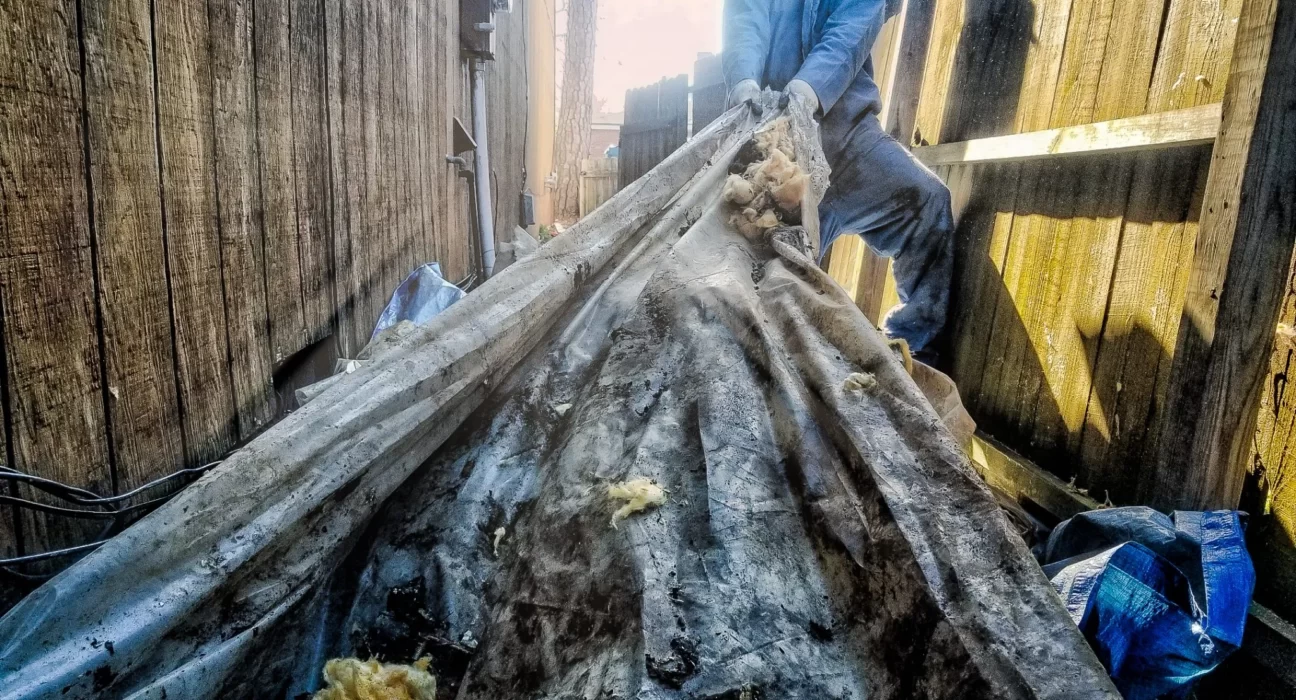Crawl spaces, often situated beneath houses as a cost-effective alternative to basements, provide easy access to essential components like plumbing, wiring, and HVAC systems. Unfortunately, these secluded spaces are also attractive to various wildlife, including mice, rats, raccoons, squirrels, and insects. Recognizing the severity of the issue is the first step in safeguarding your crawl space. Look for signs such as peculiar noises, gnawed wires or pipes, droppings, or damage to insulation. If you discover the presence of animals, understanding how to clean crawl spaces contaminated by animals becomes crucial for maintaining a safe and healthy environment in your home.
Identifying Entry Points
Identifying the presence of animals is the initial step in effective pest control. Once confirmed, the focus shifts to identifying potential entry points, which are often found in vulnerabilities such as holes, cracks, open crawl space vents, or gaps around plumbing and wiring. These openings serve as gateways for unwelcome intruders, and addressing them promptly is vital. Utilizing durable materials like steel or copper meshes, high-quality caulking, or expertly designed vent covers is imperative to fortify your home against re-entry and ensure a lasting barrier against invasive wildlife.
External Environment Maintenance
Preserving a well-maintained external environment is crucial for deterring unwanted inhabitants in your home. Overgrown trees and shrubs near the house can offer accessible perches for climbing creatures, emphasizing the importance of regular pruning to eliminate potential entry points. Minimizing attractions is key; refrain from storing food, including pet food, in proximity to the house, as the scent can lure diverse wildlife. Additionally, positioning firewood at a distance from the property and elevating it above the ground acts as a deterrent, discouraging pests from establishing nests in or around the stored wood.
Managing Attractive Elements
Items such as garbage, compost piles, fruit trees, and bird feeders have the potential to attract animals to your property. To mitigate this risk, invest in robust bins with secure, tight-fitting lids to prevent scavengers from accessing waste. Regularly cleaning up compost heaps and fallen fruit is essential in minimizing the allure for wildlife, reducing the likelihood of attracting unwanted visitors to your outdoor spaces. This proactive approach to waste management helps create an environment less conducive to the presence of animals near your home.
Illuminating the Periphery
Strategically placing floodlights around the perimeter of your home proves to be an effective deterrent against animals, as many creatures are nocturnal and tend to avoid well-lit areas. Achieving the right balance is key, ensuring the lights are bright enough to discourage animals without creating excessive light pollution that might disturb neighbors. By implementing this measure, you not only enhance the security of your property but also contribute to a considerate and harmonious neighborhood environment.
Crawl Space Encapsulation
Integrating a crawl space encapsulation system serves as a highly effective strategy to establish a moisture-free environment that dissuades animals from taking residence. This comprehensive approach not only acts as a preventive measure against unwanted critters but also yields additional benefits, including energy savings and enhanced indoor air quality. By creating a barrier against moisture, the encapsulation system contributes to the overall well-being of the home, making it a multifaceted solution for both pest control and environmental optimization.
Proper Cleaning in Contamination Scenarios
If your crawl space has already been infiltrated by animals, undertaking a thorough cleaning becomes imperative to thwart the space from evolving into a breeding ground for bacteria and viruses. Swift and meticulous removal of animal waste, nesting materials, and any potential contaminants is essential to mitigate health risks and prevent the spread of pathogens. This proactive measure not only addresses the immediate concern of animal infestation but also safeguards the overall hygiene and safety of your living environment, ensuring a clean and habitable space for residents.
Seeking Professional Help
When faced with persistent invasions or infestations involving legally protected species, like bats, seeking professional assistance becomes essential. Engaging services specialized in humane removal and prevention of future invasions is highly recommended. Professionals with expertise in handling legally protected wildlife ensure compliance with regulations while employing ethical practices to address the issue. This approach not only prioritizes the well-being of the protected species but also emphasizes the importance of long-term prevention to maintain a harmonious coexistence with wildlife.
Regular Checkups and Cleaning
Establishing a routine for regular checkups and cleaning of your crawl space is pivotal in preventing animal invasions. Proactive maintenance proves to be significantly easier and more cost-effective than dealing with the complexities of managing animals once they have infiltrated the space. By consistently monitoring and addressing potential vulnerabilities, homeowners can avoid the challenges and expenses associated with mitigating infestations, emphasizing the importance of a proactive and preventive approach in safeguarding the integrity of the living environment.
Final Thoughts
Your home is your sanctuary, and investing in preventive measures to ward off animal invasions ensures the health and stability of your home infrastructure. Being proactive about keeping your crawl space clean and animal-free is a worthwhile effort and investment.










